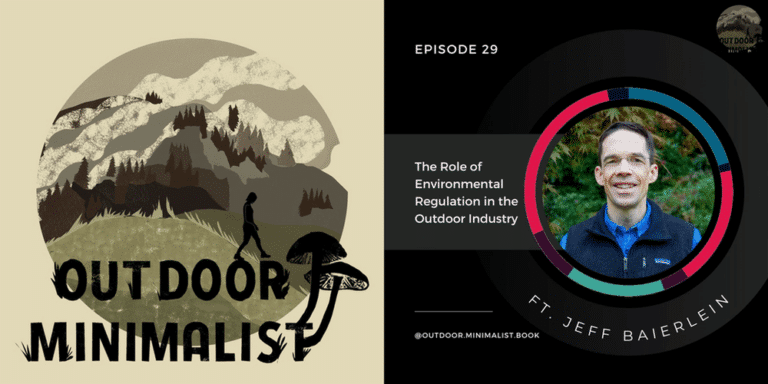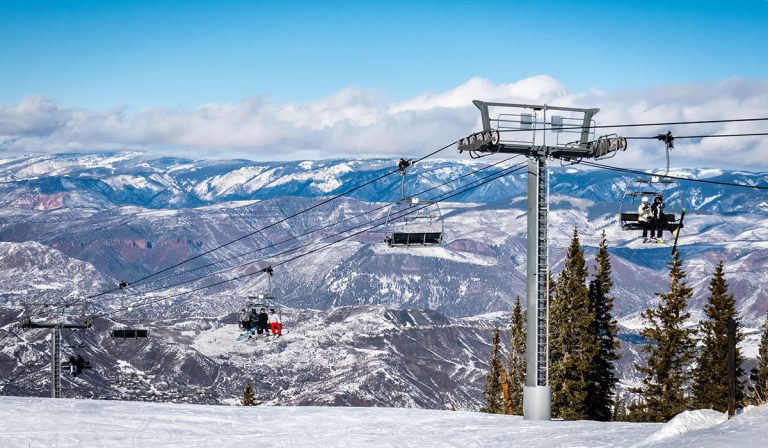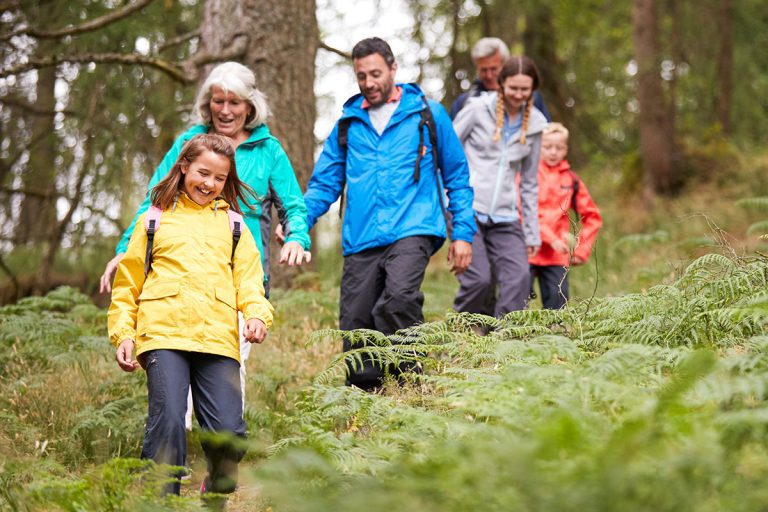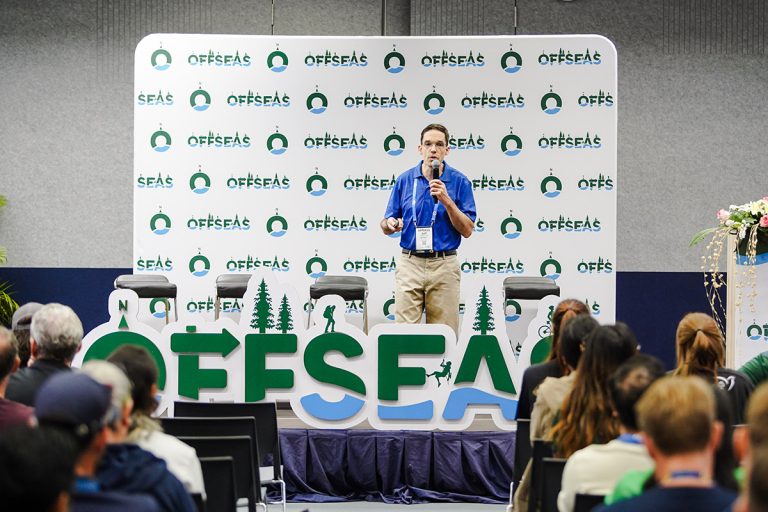Podcast Episode Addresses Environmental Sustainability in Outdoor Recreation Through Legislation and Regulatory Regimes—and How You Can Be Involved

Viristar’s work focuses on the out-of-doors and the natural environment. Within that field, we address subjects from safety to environmental education curriculum development and more.
We provide guidance on how individuals and organizations can make improvements in outdoor education, outdoor recreation, and environmental programming.
Viristar offers information both at the granular level as well as sharing perspectives on making large-scale changes, such as through regulatory regimes.
We were very pleased to be invited by Meg Carney, the host of the Outdoor Minimalist podcast, to talk about environmental policy, specifically regulation, and how common-sense regulation can support environmental sustainability in outdoor recreation and related activities.
You can listen to the episode here, or through Apple, Spotify, Google, or wherever you get your podcasts.
The transcript for Episode 29, The Role of Environmental Regulation in the Outdoor Industry, is below, lightly edited for clarity.
Transcript
What makes you interested to talk about the role of regulation in outdoor minimalism?
Regulation can be a very powerful mechanism for supporting environmentally sustainable behavior across a large group of people in a short amount of time. This is particularly the case with compulsory government regulation.
Making outdoor recreation truly environmentally sustainable requires action at all levels. Reducing one’s personal consumption and environmental impact in outdoor recreation, as you talk about in your book Outdoor Minimalist, is one important part of the solution—think globally, act locally, as you say. And, those positive steps can be greatly amplified by well-designed and appropriately enforced regulation. They can help us think globally and act globally too.
In your inaugural podcast episode, you quoted Anne-Marie Bonneau, saying, “We don’t need a handful of people doing zero waste perfectly; we need millions of people doing it imperfectly.” Regulation can help you get there.
So tell me: how does regulation affect the environmental impact that people have while enjoying the great outdoors?
That’s a great question, Meg. Suppose you want to know if a product—anything from a sleeping bag to a banana—is produced in an environmentally sound way, or, for that matter, in a way that supports equity and social justice. But you’re confused by various marketing claims and worry about greenwashing—a topic you covered in episode 11. Regulations that set standards for environmentally friendly or socially responsible business practices and truth in advertising can help you cut through the marketing messages and see what’s really going on.
Similarly, in episode 3 on identifying sustainable products, you talked about how it’s confusing when one tries to identify product sustainability throughout the life cycle of an item. Regulatory standards around product manufacture, repair and disposal can address this.
Or perhaps you want to fly to an amazing National Park for an outdoor adventure trip, but you’re concerned about the carbon footprint of your flight, and the effectiveness of the carbon offsets the airline is trying to sell you. You individually can’t compel the development of carbon-neutral air travel. But regulation can drive the development of battery and other alternative technologies that can truly decarbonize the air travel sector, as it’s in the process of doing with the auto industry.
Let’s back up a moment. What do you mean by the word regulation?
There are three main types of regulation: self-regulation, third-party regulation, and government regulation.
Self-regulation examples include an informal outdoor recreation group agreeing to carpool to the trailhead or put-in, or to follow leave no trace principles. Or a small outdoor gear manufacturing company agreeing to follow supply chain transparency best practices.
Third party regulation is when an organization agrees to conform to the standards of another entity, often a nonprofit industry association, and undergoes a conformance verification process by that standards body. An example would be a summer camp in the USA being accredited by the American Camp Association, or a park and rec agency being awarded accreditation by the National Recreation and Park Association’s Commission for Accreditation of Park and Recreation Agencies, or CAPRA.
In the third episode of your podcast, where you talked with Mary Swanson of Lava Linens about how to identify sustainable product materials, she mentioned her company’s engagement with B Corp, Climate Neutral, and bluesign certifications, and the Masters of Linen mark—these are also examples of third-party regulation.
Third-party regulation is generally voluntary, meaning that an organization typically isn’t required to be accredited or certified in order to do business.
Government regulation and law is direction where compliance is compulsory, with civil or criminal penalty for non-compliance. This can come from the legislature, executive orders and regulations issued by government agencies, or judicial case law.
I should note that although there are differences between legislative acts and executive branch regulation, we’re treating them as functionally synonymous here, as they’re both government directives which must be followed.
All three types of regulation have an important role to play in outdoor minimalism and environmental sustainability. However, my focus here is on compulsory government regulation, as that can be enormously powerful in supporting environmental sustainability in outdoor recreation.
Can you give some examples of government regulation that can support the goals championed by the idea of Outdoor Minimalism?
Sure. At the federal level, the Great American Outdoors Act of 2020 invests billions in outdoor recreation and funds more equitable access to the outdoors.
There are local success stories too. Here in Washington state in northwestern USA, in 2019, after decades of effort, local outdoorspeople successfully advocated for the creation by an act of Congress of the Mountains to Sound Greenway National Heritage Area, which, although it’s not as robust as an official wilderness area designation, supports environmental protection and outdoor recreation over the Area’s 1.5 million acres, including 1,600 miles of trails traversing wild rivers, forests and mountains.
There are also other national legislative and regulatory packages that may be enacted in the near future.
The Biden-Harris administration’s Build Back Better plan is being re-visioned to potentially have a stand-alone piece on public lands access and protection.
And other pieces of the Build Back Better plan, if implemented, could do things like help decarbonize the transportation sector, so your drive to the trailhead or put-in is fossil fuel-free. This is already happening in Europe, where the EU has proposed a ban on the sale of new gas-powered cars starting 13 years from now, and also by executive order in California and by law in New York, where only zero-emissions new vehicles will be sold starting in 2035.
If your goal is “to implement minimalism in all your outdoor pursuits,” a wonderful way to do that is to minimize the environmental impact of your travel to outdoor spaces by using petroleum-free transportation.
The 30×30 conservation plan also known as “Conserving and Restoring America the Beautiful” seeks to conserve 30 percent of the nation’s land and waters—creating parks, increasing recreation access, focusing on under-served and nature-deprived communities, protecting biodiversity, and addressing the global climate crisis.
And there are a handful of other items working their way through the US Senate, including the Outdoors for All Act, the Environmental Justice in Recreation Permitting Act, and the Outdoor Recreation Act.
And listeners may be able to identify local and regional regulation or other governmental actions that help establish, protect and restore outdoor recreation spaces in their community.
What are examples of third-party regulation, like certification or accreditation schemes, that companies can be a part of to foster environmental sustainability in outdoor recreation?
Outdoor experiential adventure organizations can pursue accreditation through the Association for Experiential Education. AEE’s standards require accredited programs to follow “principles for minimizing environmental impacts when conducting activities,” and require program staff to “encourage participant awareness of environmental issues and ask relevant questions about environmental problems.”
Summer camps or year-round camps in the USA can follow accreditation standards of the American Camp Association. This requires accredited camps to provide “structured activities that develop awareness for the natural environment and build appreciation and responsibility for the natural environment” in campers, and minimize the camp’s impact on the environment.
I mentioned the NRPA’s CAPRA accreditation process; this requires accredited park and rec agencies in the USA to have an environmental sustainability policy, procedures to ensure environmental stewardship, and a recycling or zero waste plan.
In New Zealand, Education Outdoors New Zealand and Recreation Aotearoa’s published Good Practice Guidelines recommend following Leave No Trace Principles.
The state of Kerala, in India, has issued Camping Guidelines for Adventure Tourism which have detailed minimum impact camping recommendations. The state of Maharashtra India last August issued outdoor adventure guidelines which include ‘Leave Minimum Impact’ practices including both LNT principles and locally-applicable standards.
Outdoor recreation organizations in India can also follow the “Eco Code of Conduct” published by the Adventure Tour Operators Association of India, which specifies leave no trace policy, using renewable energy sources, and minimizing one’s carbon footprint.
The Adventure Travel Trade Association’s International Adventure Travel Guide Qualification and Performance Standard requires adventure travel guides to be trained on how to minimize “impacts on biodiversity, ecosystems and climate” as well as educate participants on sustainable travel best practices and take action against illegal wildlife and cultural artifact trade.
In Iceland, the Icelandic Tourist Board or Ferðamálastofa has a ‘Vakinn’ Quality & Environmental Certification for outdoor tourism operators with environmental sustainability criteria. A number of other countries, such as Costa Rica, have similar standards for outdoor recreation operators.
What’s an example of when regulation can build on the efforts an individual is making to be mindful about minimizing their personal environmental impact, for example by purchasing only what they need?
In episode two of your podcast, where you talked about three of your 7 Rs—Reduce, Refuse, and Rethink—you brought up the powerful forces driving unnecessary consumption through relentlessly marketing products produced by companies driven to sell merchandise in a capitalistic market economy. It’s hard for individuals to resist these persistent and sophisticated marketing messages. Regulation can help.
For example, good regulation could help ensure that environmentally sound practices are employed through the entire supply chain, or that the carbon cost of manufacture and distribution is included in the retail price rather than socialized to often the world’s most underprivileged people, who will be disproportionately affected by the global climate emergency.
So even if an individual succumbs to that impulse to snap up that great new outdoor product they see on Instagram, good regulation can reduce the environmental impact of that purchase.
People can be enthusiastic about reducing plastic packaging or following Leave No Trace principles. These are things that individuals can do to make a difference right away. Regulation, though, can appear really distant, abstract, difficult to influence or even boring to even the most environmentally committed outdoorspeople. When it comes to regulation, what are simple ways people can be involved and make a difference?
Thanks for asking that question, Meg. Taking individual action to influence regulation can be easy, and even fun—and it can make a real difference.
And it’s a great opportunity for people who are looking for next steps beyond minimizing their own individual environmental impact, and who want to be a force for good at a regional, national or global scale.
First, make sure you’re registered to vote, and vote! This is important.
You can also donate to political campaigns, organizations and political leaders who support your environmental sustainability values.
And you can donate to advocacy organizations like Earthjustice, which has been really effective in supporting good environmental regulation and legislation across the USA. Or you can give money to a local advocacy organization active in your community, or an organization working in a specific area important to you, like marine conservation or wildlife protection.
Money really counts, so your donation can make a big impact.
And if you have more time than funds, you can volunteer or work for an industry association supporting sound regulation, or an environmental advocacy organization.
Your podcast subscribers may have heard in your conversation with an environmental conservation lobbyist about how effective it can be to call and write your legislators to advocate for legislation you believe in. That’s exactly right, and it doesn’t take long to find the contact information for your political representatives and give them a call and follow up with a brief letter.
I think it’s useful to take some steps that feel right for you, but not to get overwhelmed by trying to do it all. I’m reminded of what the environmental activist Ed Abbey said: “It is not enough to fight for the land; it is even more important to enjoy it…. explore the forests, climb the mountains…run the rivers…”
So you can write a check to the Sierra Club, then go out and take a hike, and let your cares drop off like autumn leaves.
What about small outdoor businesses? How can they interact with regulation in a way that supports environmentally sustainable outdoor recreation?
Small and start-up businesses are really constrained by resource limitations, but there are still simple things they can do.
Businesses can support organizations that advocate for common-sense regulatory support for environmentally sustainable outdoor recreation, like, in the USA, Outdoor Alliance, which is a coalition of national advocacy organizations focused on outdoor recreation, and the Association of Outdoor Recreation and Education, or AORE.
On the other hand, businesses can avoid joining, contributing to, or indirectly supporting special interest groups that have a deregulatory or anti-environmental agenda.
For example, last year, a coalition of environmental groups called on companies to quit the U.S. Chamber of Commerce until that group ceases pro-fossil fuel lobbying.
Patagonia has talked about how the powerful special interest group American Legislative Exchange Council, or ALEC, funded in part by corporate contributions, has fought against environmental regulation.
And businesses can practice good self-regulation in their own business activities like materials sourcing, minimizing carbon-intensive transportation, and the like.
And companies can be part of third-party regulatory regimes like the ones I mentioned earlier—everything from B Corp to associations specific to your industry, whether that be textiles or adventure tourism—that provide guidance and audits to help small businesses act in an environmentally and socially responsible manner.
What are some of the challenges facing regulation’s role in outdoor minimalism?
Here in the USA, we have a relatively anti-regulatory culture. The influence of large corporations is very strong, and government is comparatively weak.
This is really different from places like New Zealand, where the government has a strong voice in creating regulation that supports all people, rather than prioritizing the rich and powerful, in many aspects of life, ranging from environmental protection to gun violence, bereavement leave, tobacco use and more.
Some observers note a decline in the sense of civic duty that American corporations once held, for example to pay a living wage to support a robust middle class, and which in some companies has been replaced by pursuing maximum profit above all else. These corporations wage a relentless battle to weaken or dismantle regulation of all kinds, and the government institutions that uphold those regulations.
And people’s general reluctance to share, compromise, consider the well-being of others, and defer short-term gain in favor of long-term benefit works against a society where we mutually agree to be regulated for the benefit of all.
Finally, good regulation is really difficult to get right. It’s very hard to craft regulatory guidance that strikes the right balances, and to update it on an ongoing basis to appropriately reflect changing circumstances. And regulation is only as effective as its enforcement regime, so even excellent regulation is of little use without an ongoing investment in robust enforcement mechanisms.
What makes you optimistic about environmentally sustainable outdoor recreation practices?
I’ve been involved professionally in outdoor recreation, environmental education, and advocacy for 35 years. And I’ve never seen this level of awareness and interest and passion that we have today for doing the critical things we need to do for environmental sustainability and social justice—like decarbonizing the global economy, and focusing on issues of equity and inclusion in outdoor programs.
In episode 2 of your podcast, where you talked about Reduce, Refuse, Rethink, you mentioned the ‘How to Save A Planet’ podcast episode called “Is Your Carbon Footprint BS,” which identified large-scale action as essential to decarbonizing the economy. Regulation is critical to this goal, and the world is taking action here in really important ways.
National governments around the world, and regulatory bodies of all sizes, are working to create well-developed regulatory and legislative structures to help people from all walks of life have access to beautiful outdoor spaces where they can enjoy nature, participate in healthy exercise and exhilarating adventure, and refresh their spirit.
Government bodies across the globe are increasingly recognizing the immense economic, social, ecological and public health benefits of outdoor spaces and outdoor recreation, and they’re creating regulations, funding streams, and institutions to maximize those positive outcomes.
And individuals and businesses are coming up with creative new ways to support responsible outdoor recreation and all the benefits it brings. And they’re contributing time, talent and money to causes and organizations that are making a difference.
There’s urgent work to be done to protect the natural environment and foster equitable access to nature. But I’m really pleased to see many people—like you, Meg, and I’m sure many of your listeners—taking effective action to build a world where environmentally sustainable outdoor recreation opportunities are accessible to all.



